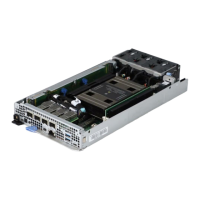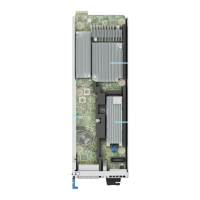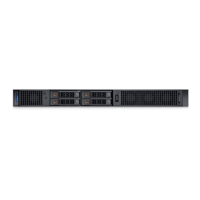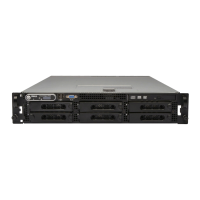Table 55. Serial Communication details(continued)
Option Description
NOTE: Only Serial Device 2 can be used for Serial Over LAN (SOL).
To use console redirection by SOL, configure the same port address for
console redirection and the serial device.
NOTE: Every time the system boots, the BIOS syncs the serial MUX
setting saved in iDRAC. The serial MUX setting can independently be
changed in iDRAC. Loading the BIOS default settings from within the BIOS
setup utility may not always revert this setting to the default setting of
Serial Device 1.
Failsafe Baud Rate Specifies the failsafe baud rate for console redirection. The BIOS attempts to
determine the baud rate automatically. This failsafe baud rate is used only if
the attempt fails, and the value must not be changed. This option is set to
115200 by default.
Remote Terminal Type Sets the remote console terminal type. This option is set to VT100/VT220 by
default.
Redirection After Boot Enables or disables the BIOS console redirection when the operating system is
loaded. This option is set to Enabled by default.
System Profile Settings
To view the System Profile Settings screen, power on the system, press F2, and click System Setup Main Menu > System
BIOS > System Profile Settings.
Table 56.
System Profile Settings details
Option Description
System Profile Sets the system profile. If you set the System Profile option to a mode other than
Performance Per Watt (DAPC), the BIOS automatically sets the rest of the options.
You can only change the rest of the options if the mode is set to Custom. This option is
set to Performance Per Watt (DAPC) by default. Other options include Performance,
Performance Per Watt (OS), Workstation Performance and Custom.
NOTE: All the parameters on the system profile setting screen are available only when
the System Profile option is set to Custom.
Optimized Power Mode When set to Enabled, processor is tuned for lower power consumption. Also sets C1E to
Enabled, sets CPU Power Management to System DBPM mode, sets Energy-Efficient Policy
to Performance, sets Uncore Frequency to Dynamic, and sets Dynamic Load Line Switch to
Enabled.
CPU Power Management Sets the CPU power management. This option is set to System DBPM (DAPC) by default.
Other options include Maximum Performance, OS DBPM.
Memory Frequency Sets the speed of the system memory. This option is set to Maximum Performance by
default.
Turbo Boost Enables or disables the processor to operate in the turbo boost mode. This option is set to
Enabled by default.
Enery Efficient Turbo Energy Efficient Turbo (EET) is a mode of operation where a processor's core frequency is
adjusted within the turbo range based on workload. This option is set to Enabled by default.
C1E Enables or disables the processor to switch to a minimum performance state when it is idle.
This option is set to Enabled by default.
C-States Enables or disables the processor to operate in all available power states. C-States allow the
processor to enter lower power states when idle. When set to Enabled (OS controlled) or
when set to Autonomous (if hardware controlled is supported), the processor can operate
in all available Power States to save power, but may increase memory latency and frequency
jitter. This option is set to
Enabled by default.
Pre-operating system management applications 49

